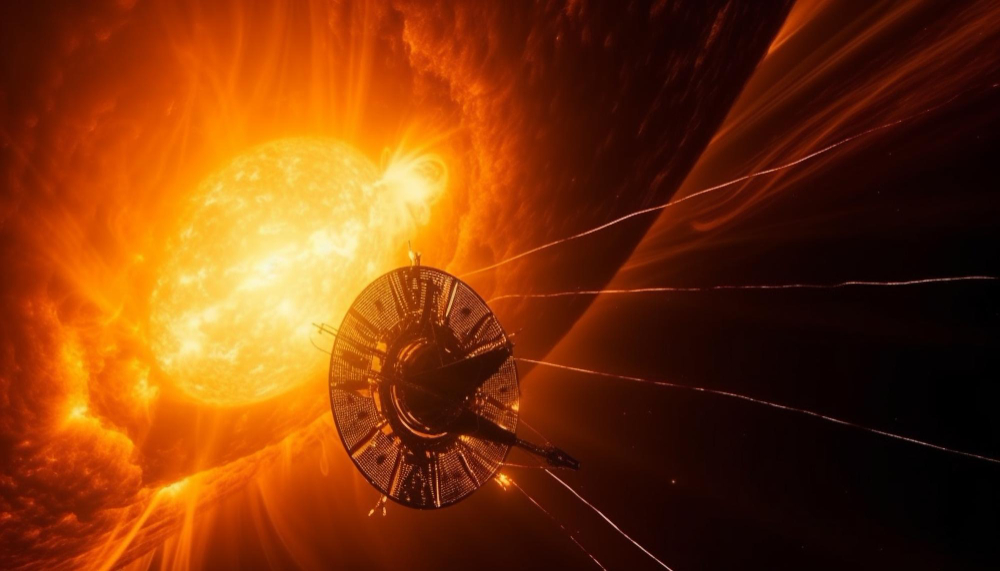
Have you ever gazed up at the night sky and marveled at the dance of the celestial bodies? Among the most captivating phenomena is the Earth’s graceful orbit around the Sun. But what exactly makes this celestial ballet possible? Let’s embark on a journey through space and time to uncover the fascinating forces and principles that govern our planet’s orbital motion.
The Master Puppeteer of Celestial Bodies
At the heart of Earth’s orbital journey lies the invisible force of gravity. First described by Sir Isaac Newton in his groundbreaking work on universal gravitation, gravity is the mutual attraction between objects with mass. In the case of the Earth and the Sun, gravity is the force that keeps our planet tethered to the Sun’s immense gravitational field, causing it to orbit in a nearly circular path.
The Blueprint for Celestial Motion
Newton’s laws of motion provide the mathematical framework for understanding the dynamics of planetary orbits. According to Newton’s first law, an object in motion will remain in motion unless acted upon by an external force. In the case of the Earth’s orbit, the combination of its initial velocity and the gravitational pull of the Sun creates a balanced system where the Earth continues to move in a curved path around the Sun, perpetually orbiting without the need for additional propulsion.
The Invisible Tug of War
In circular motion, such as the Earth’s orbit around the Sun, there exists a centripetal force that continuously pulls the orbiting object toward the center of its path. In the case of the Earth, this centripetal force is provided by the gravitational pull of the Sun. This force acts as a tether, keeping the Earth in its orbital path and preventing it from flying off into space.
Navigating the Cosmic Highway
The study of orbital mechanics delves into the intricate dynamics of celestial motion, including the calculation of orbital trajectories and velocities. Using principles derived from Newtonian physics and Kepler’s laws of planetary motion, scientists can precisely predict the path of celestial bodies as they orbit around each other. This knowledge is essential for space exploration missions, satellite deployment, and understanding the behavior of objects in our solar system.
Insights into Planetary Motion
Johannes Kepler’s three laws of planetary motion provide further insight into the mechanics of Earth’s orbit around the Sun. Kepler’s first law, also known as the law of ellipses, describes the shape of planetary orbits as elliptical rather than perfectly circular. Kepler’s second law, the law of equal areas, states that a planet will sweep out equal areas in equal times as it orbits the Sun, illustrating the concept of varying orbital speed. Finally, Kepler’s third law, the law of harmonies, establishes a mathematical relationship between a planet’s orbital period and its distance from the Sun, revealing the underlying order and symmetry in the solar system.
The Delicate Balance of Gravitational Forces
Despite the vast distances and immense forces at play in the cosmos, the Earth’s orbit around the Sun remains remarkably stable. This stability is due to the delicate balance of gravitational forces between the Earth and the Sun, which keep the planet on its orbital path while allowing for slight variations and adjustments over time. As our understanding of celestial mechanics continues to evolve, so too does our appreciation for the intricate beauty and complexity of the cosmic dance that shapes our universe.
A Cosmic Ballet of Timeless Wonder
In the grand tapestry of the cosmos, the Earth’s orbit around the Sun is a mesmerizing spectacle that has captivated humanity for millennia. From the ancient astronomers who charted the movements of the heavens to the modern-day scientists who unravel the mysteries of celestial mechanics, our fascination with planetary orbits reflects our innate curiosity about the nature of the universe. So, the next time you gaze up at the night sky, take a moment to ponder the awe-inspiring forces that govern our planet’s celestial journey—a journey that continues to inspire wonder and discovery in the hearts and minds of stargazers everywhere.

